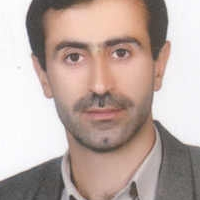The Effect of Combined Application of PGPR and Mycorrhizal Fungi in Intercropping of Linseed (Linum usitatissimum L.) and Faba bean (Vicia faba L.) on Growth Characteristics and Seed Yield
Kh Alizadeh , E Rezaei , Chiyaneh , R Amirnia , M Barin
Intercropping is defined as the growing of two or more crops at the same time in the same piece of land. Intercropping of legume with non-legume compared with monoculture has many advantages such as reducing the risk of crop failure, making efficient use of available land, improving productivity and income, more efficient use of resources (water, nitrogen, and radiation) and increasing food security in vulnerable production systems. Biofertilizers are important not only for the reduction of quality of chemical fertilizers but also for getting better yield in sustainable agriculture. Application of biofertilizers and no use of chemical fertilizers are rapidly gaining favor. Arbuscular mycorrhizal fungi (AMF) has been well documented to be a bio-fertilizers that have a symbiotic relationship with many crops and by increasing the uptake of nutrients mainly phosphorus, and enhancing the water absorption and resistance to pathogens, improves growth and yield of host plants in sustainable agricultural systems. The main objective of the present study was to determine the effect of biofertilizers (nitrogen, phosphorus, potassium and sulfur solubilizing bacteria+ Arbuscular mycorrhizal fungi) and intercropping on seed yield and yield components of linseed and faba bean.
This experiment was conducted as factorial layout based on randomized complete block design with three replications at the Research Farm of the Faculty of Agriculture, Urmia University, Iran, during growing season of 2017. The first factor was five intercropping patterns including 1 row linseed + 1 row faba bean, 2 row linseed + 2 row faba bean, 3 row linseed + 3 row faba bean, and monocropping of each crop and the second factor was included control (no fertilizer), and biofertilizers (nitrogen, phosphorus, potassium and sulfur supplier bacteria+ arbuscular mycorrhiza fungi). Before the sowing, the related biofertilizers were shaked completely to cover the whole seeds surface after which the seeds were shadow-dried and planted, irrigation was done immediately after seed sowing. No fertilizer was used during the growing season. In addition, the land equivalent ratio (LER) was calculated to determine the advantages of intercropping. The Analysis of variance was performed using SAS 9.4 software; means were compared by using Duncan's multiple test at 0.05 probability level.
The results showed that the effect of cropping pattern on all measured traits was significant on height, number of lateral branch, number of capsule per plant, number of seed per capsule, 1000-seed weight, biological yield, seed yield, oil percentage of linseed and on height, number of lateral branch, number of pod per plant, number of seed per pod, 1000-seed weight, biological yield, seed yield of faba bean. The highest seed yield of faba bean (4.280 t ha-1) and linseed (2.230 t ha-1) were obtained in monocropping treatments, respectively. The higher production in linseed and faba bean monocropping may be due to the less disturbance in the habitat in homogeneous environment under monocropping systems. The results showed that biofertilizer had a significant effect on all traits, in linseed and faba bean. The highest yield and yield componenet of both plants were achieved in use of biofertilizers. In linseed, the highest oil percentage of all treatments was higher than solecropping. Also, total LER was more than 1 and the highest values were observed in all treatments. The maximum LER values (1.50) were obtained for intercropping 2 row of linseed + 2 row of fababean with using biofertilizers. It seems that better utilize of the growth resource in the intercropping led to reach this result.
In general, the results of this experiment showed that the faba bean and linseed yield were influenced by different intercropping patterns and biofertilizer. The highest seed yield for both plants (faba bean and linseed) were achieved in monocropping. In the present study, application of biofertilizers could improve the yield and some characteristics of faba bean and linseed. In addition, with application of biofertilizer the seed yield of linseed and faba bean about 38% and 31% compared with control (non-consumption), respectively. It seems that the use of biofertilizers in intercropping is one of the suitable strategies for achieving optimal yields with minimum inputs, which in the long run can reduce the need of crop systems to chemical inputs.
- حق عضویت دریافتی صرف حمایت از نشریات عضو و نگهداری، تکمیل و توسعه مگیران میشود.
- پرداخت حق اشتراک و دانلود مقالات اجازه بازنشر آن در سایر رسانههای چاپی و دیجیتال را به کاربر نمیدهد.



